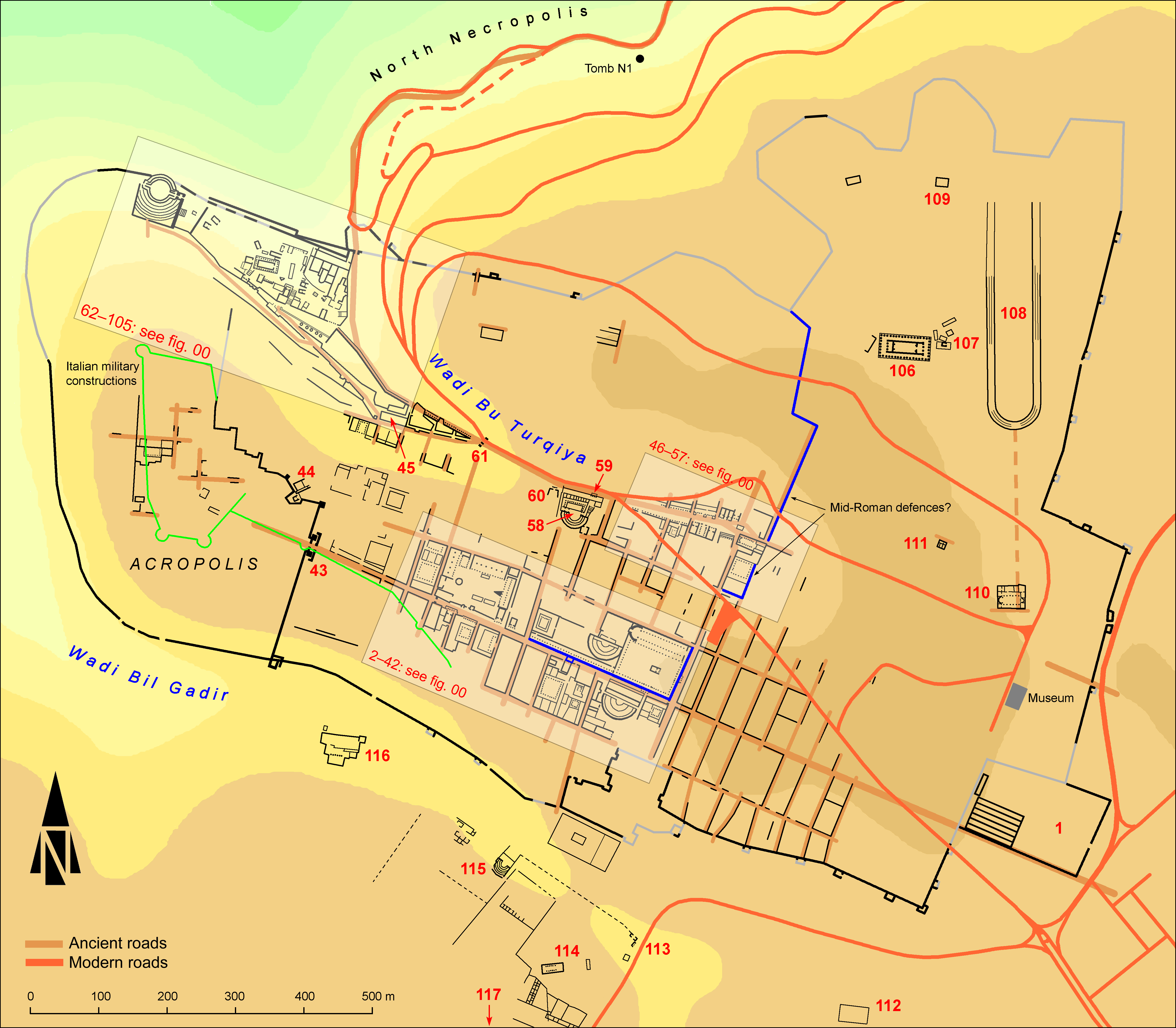EpiDoc XML:
IGCyr0855002
Trismegistos ID:
738407
Source description
Support: White marble base with egg and dart mouldings on three sides above (and probably also below when complete); on top, circular hole and channel for attachment; worn out below on the whole width and moreover recently scratched on the upper right part and broken off at lower right angle, due to construction engines (complete base w: 0.89 × h: 0.38 × d: 0.57).
Layout: Inscribed on front face between the mouldings (w: 0.795 × h: 0.165 × d: 0.40).
Letters: 0.05-0.055.
Date: Fourth century BC (lettering).
Findspot: Found in 1995 at Cyrene ➚: probably from South Necropolis.
Place of origin: Findspot.
Last recorded location: Seen by C. Dobias-Lalou in 2004 at Cyrene ➚: inside archaeological enclosure North of Caesareum.
Text constituted from: Transcription from stone (CDL).
Bibliography
Mohamed – Reynolds 1997, pp. 32-33 n. 1 A, whence SEG, 47.2177, A; IGCyr 085500 ➚. Cf. Thorn – Thorn 2009, p. 266; Belzic 2022, catalogue B.39.
Text
Apparatus
2: Ἀναξίπ[π]ω Mohamed – Reynolds 1997
French translation
Andrias fils d'Anaxippos.
English translation
Andrias son of Anaxippos.
Italian translation
Andrias figlio di Anaxippos.
Commentary
This base comes from the same tomb, unrecorded by Cassels, as IGCyr0856002 and IGCyr0857002 and was found during construction works in the new town of Shahat.
As supposed by the editors, the three bases seem to mention men belonging to four generations in the same family.
CC BY-NC-SA 4.0 Deed Attribution-NonCommercial-ShareAlike 4.0 International License.
All citation, reuse or distribution of this work must contain a link back to DOI: https://doi.org/10.60760/unibo/igcyrgvcyr2 and the filename (IGCyr000000 or GVCyr000), as well as the year of consultation.

